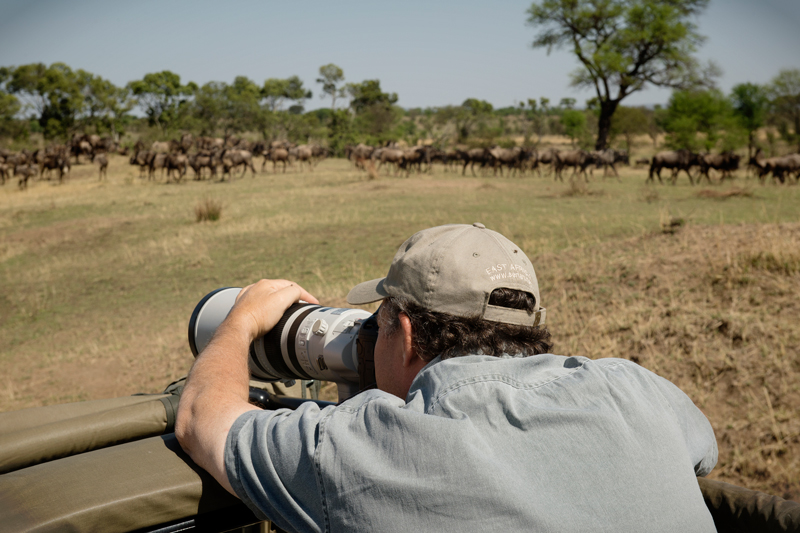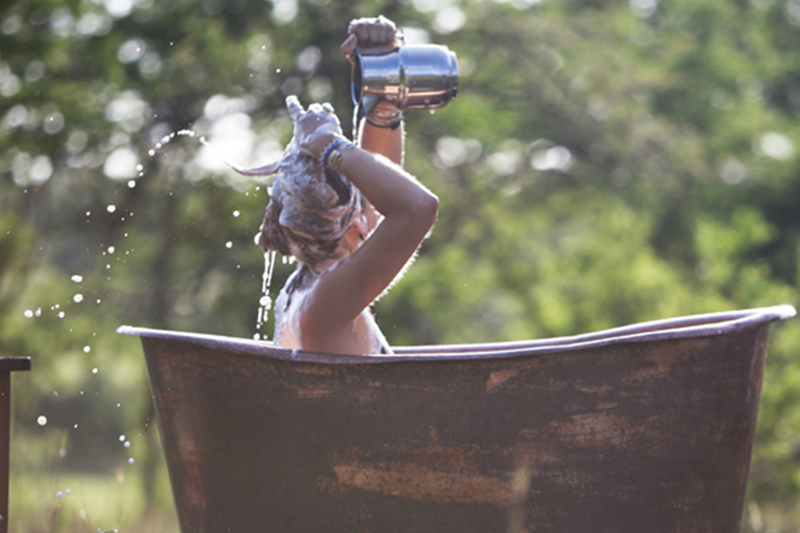Serian’s Serengeti South
Serian’s Serengeti South is a seasonal tented camp operating from December to April in the north-western Ngorongoro Conservation Area on the southern edge of the Serengeti Plains.
Serian’s Serengeti South is a traditional seasonal tented camp offering an upmarket and old school hosting experience which is getting harder to find these days. The camp is owned by safari guide Alex Walker, and either Alex himself or one of his management team are always in camp to host guests. Although technically “mobile” and offering a close to nature bush experience, the camp is very comfortable and there is an air of quiet quality about everything from the details of the accommodation to the food and service. The guiding is always good and it is great that each set of clients automatically get their own private vehicle and guide for flexible activities. Being on the southern edge of the Serengeti plains, the camp is situated away from the crowds and affords the opportunity for some cultural experiences and extended walking with the option of fly-camping, in addition to seeking out the migration herds on longer drives. If your priority in the southern Serengeti is big game, then you may consider their sister camp, Serian’s Serengeti Kusini, either instead of or in combination with this camp. A five or six night combination of these two camps is perfect for combining big cats, migration, exclusivity, walking and culture.
Rooms
The camp consists of five elegantly furnished traditional Meru-style safari tents, including a family suite. Each tent has en suite facilities (flush toilet, plumbed basin and bucket shower), proper beds, luggage racks and hanging space, Persian rugs and safari chairs and all tents have plug points. The family suite comprises two en suite tents either side of a small lounge tent (note the tents do not connect internally, although they are all under one fly sheet).
Central Areas
There is a central tent which houses a cosy lounge/bar and a separate dining tent, although most meals are taken alfresco if weather permits. There is a camp fire area around which to enjoy evening drinks.
Facilities
Wi-Fi – No
Power for Charging – Yes
Swimming Pool – No
Habitat & Wildlife
With an area of some 14,000 sq. km, Serengeti is probably the best-known wildlife sanctuary in the world. The ecosystem includes the National Park itself, the Ngorongoro Conservation Area, Maswa Game Reserve and Kenya’s Masai Mara National Reserve, together forming one of the most complex and least disturbed ecosystems on earth. The landscape was originally formed by volcanic activity in the Ngorongoro highlands and it varies from the open short grass plains in the south, to savannah and scattered acacia woodlands in the centre, to extensive woodland and black clay plains in the west, to hilly wooded grassland in the north. Most of the permanent water is found towards the northern and western areas, the lack of permanent water and food in the south being the main reason for the annual migration.
The park is home to approaching 2,000,000 wildebeest, 500,000 Thomson’s gazelle and 250,000 zebra: the largest concentration of plains game in Africa. More than 30 species of herbivores are found here, as well as all the major predators and nearly 500 species of birds.
The southern reaches of the park consist of endless ‘short-grass’ open plains. In the heart of these plains on the border of the Serengeti National Park and the Ngorongoro Conservation Area is an area known as Ndutu, where a series of partial soda lakes and marsh areas are surrounded by woodland. Many of the camps and camp sites in the southern Serengeti are located in this area. To the west the open plains are bordered by the woodlands of the Maswa Game Reserve, and a secondary hub of camps can be found along the edge of woodland, known as the Kusini area. To the east the plains are endless, stretching south-east through the Ngorongoro Conservation Area and north-east towards the Loliondo Game Controlled Area which borders the eastern Serengeti.
The hundreds of thousands of wildebeest, gazelles and zebra congregate on these southern short grass plains from December to April, usually calving around the end of January when the nutritious grass is at its best. During this time the ‘migration’ is restricted to local movements according to rainfall and grazing, though even within the southern Serengeti region the distances are vast. This southern region is exceptional for lion, cheetah and spotted hyaena sightings, all of which thrive on the open plains, whilst leopard, serval, African wild cat, elephant, buffalo, giraffe, eland, topi, jackal, ostrich and impala can also be seen. Wild dogs are making a comeback in the region and are occasionally encountered to the south of Ndutu in the Ngorongoro Conservation Area.
Depending on grazing conditions and water supply, the start of the Serengeti annual migration begins at the end of this period, and the herds begin to march north/westwards, ‘lowing’ incessantly so that the air hums like a dynamo (zebra first, then the wildebeest and gazelles). Lion, cheetah, hyaena and wild dog follow, ensuring that only the fittest survive, while jackals trail behind and vultures circle overhead.
At the very southern edge of the Serengeti plains, in the Ngorongoro Conservation Area, the land rises into the Ngorongoro Highlands. In the south-western edge of the highlands is Lake Eyasi, a harsh environment at the foot of the Rift Valley Escarpment. Serengeti South has a very exclusive location on the far southern edge of the Serengeti Plains, just outside the National Park in the Ngorongoro Conservation Area. This area is very private compared to other parts of the southern Serengeti, and is fantastic for walking and culture, especially to the south of camp where you can explore the highlands towards Lake Eyasi.
Activities
Activities are flexible and a private guide and vehicle is included with each booking for game drives by day and night. Short guided walks and longer full day walks are an excellent way to explore the region, which is home to the Hadzabe bushmen. For keen walkers, multi-day fly-camping adventures are also offered for a minimum of three nights (a three night walk to Lake Eyasi is highly recommended) and this must be pre-booked. Please note that there is a minimum stay of five nights at this camp, be that on its own or in combination with either Serian Kusini or fly-camping.
Seasons
Serian’s Serengeti South is open from December to April each year.
The camp is very suitable for families looking for an exclusive tented bush adventure. The family tents are great, with the sleeping areas linked by a small lounge area, although as the lounge area is not enclosed, we feel the family tents are not suited to families with very young children. The very personal and flexible nature of the Serian camps makes them ideal of families looking for a relaxed, exclusive and tailored experience.
Serian offers employment and job opportunities for rural communities. 80% of their staff are from the local communities where they offer apprenticeship programmes. Any given member of staff is sending at least 70% of their salary back to their family to help pay for food, medicine and education. By staying at Serian, guests are not only contributing to the economy of Tanzania and the Government’s commitment to basic infrastructure, they are also, and very directly, touching the lives of Tanzanians related to the staff which they meet and spend time with in camp. Serian are also involved with and assist in the education of those from the communities that may not be employed by them, spotting local talent and encouraging them to join in skills and training sessions.
Serian contribute to the Frankfurt Zoological Society’s Serengeti De-Snaring Programme which sweeps the areas in which they operate their walking safaris. 25% of the cost which each guest pays to attend on of Serian’s walking safaris is donated to this programme.


























